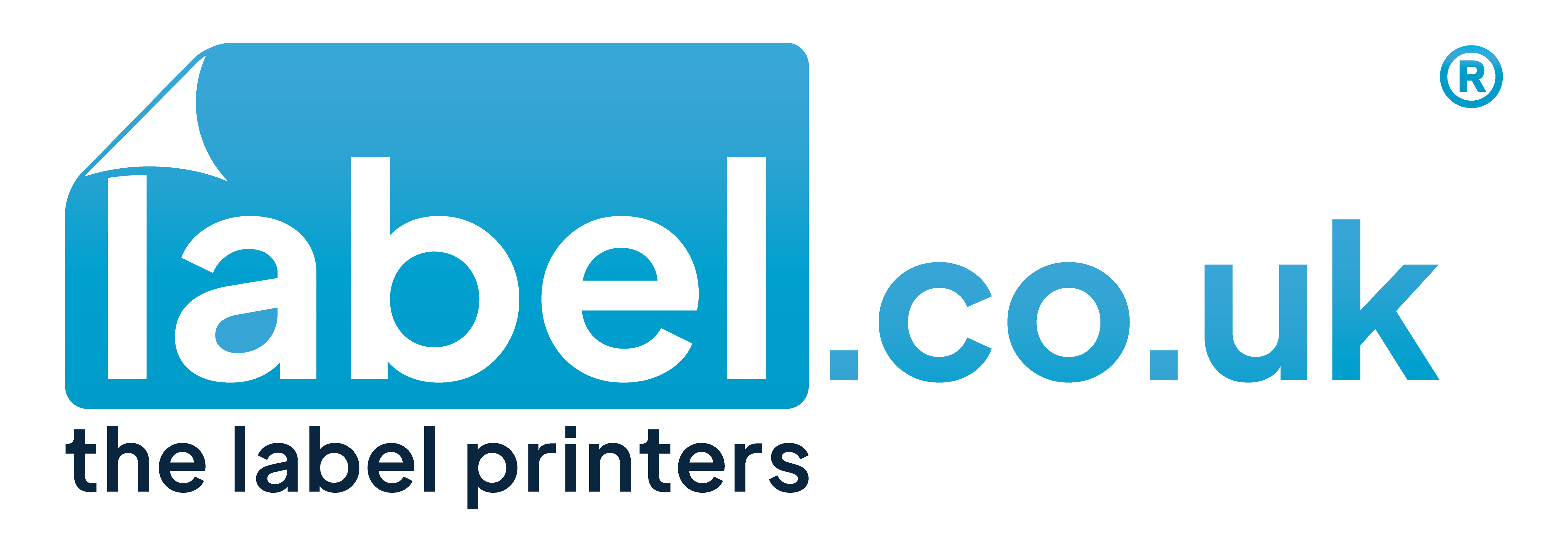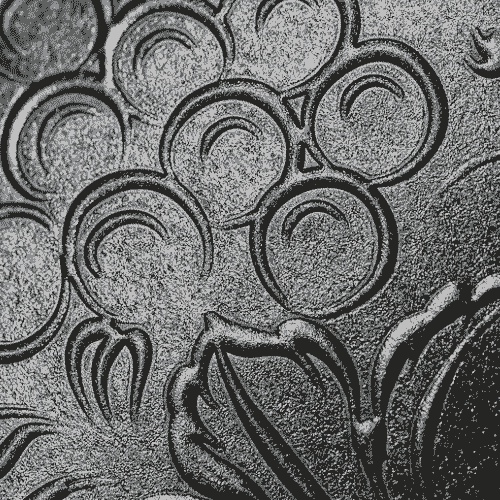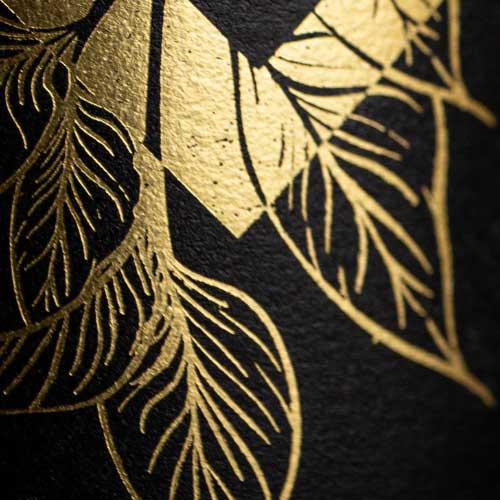Level Up Your Labels
Add Embossing to Your Printed Labels
We offer three types of embossing techniques: blind embossing, hot foil stamping, and relief embossing.
Blind embossing is a classic finishing technique and a very efficient marketing tool. It visually highlights certain elements of your label design while simultaneously adding a tactile layer to it. Therefore, your customers can not only experience your product packaging by looking at it but also by feeling it.
Hot foil stamping dispenses with deforming the label material. In this technique, a foil is added to your labels using heat and pressure. These foils come in all kinds of colours. Classics include gold and silver. However, you can also get hot foils in green, blue, red and many other colours. They are a great way to make your labels real eye-catchers.
Relief embossing is the combination of the two other techniques. It is sometimes called the queen of finishing touches. By both deforming the material and adding a colourful hot foil to that same area, a stunning visual and tactile effect is created. This embellishment is guaranteed to catch potential customers’ attention.
500 or 50.000 Labels? The Quantity Is up to You!
At label.co.uk, we use digital printing machines. Therefore, we can produce short print runs at cost-efficient prices. Especially for small businesses, start-ups, or printing special/limited editions, this can be a game-changer.
However, of course, we do high-volume print runs as well. In fact, the price for each individual label gets lower the more the quantity increases.
With our convenient online calculator, you can create quotations for your label orders all by yourself. No need to send a request and waste time waiting for an answer. With our calculator tool, the ordering process can be quick and autonomous from start to finish. Should you have questions about how to order your printed labels via our website, you are more than welcome to get in touch with us! On each of our pages, you will find a “How can we help you?” chat symbol in the left-hand corner at the bottom. Click on it, and one of our customer service colleagues will chat with you in real time to help you with any questions you might have.
If you prefer exploring on your own, you can find a video tutorial on how to use the calculator on our website, too:
Printing in CMYK
CMYK stands for Cyan, Magenta, Yellow and Key. In this case, Key stands for black because that is the key colour that determines the final output.
When you look at a printed image in extremely high resolution, you will realise that it consists of countless tiny dots of colour. Namely, the four colours listed above. By combining them in varying percentages, printing machines can create virtually any colour.
RGB vs. CMYK
CMYK is the colour spectrum we use for printed images. In contrast, all digitally displayed colours, for example, on your computer screen, use the RGB colour space. Sometimes, this leads to confusion in terms of printing files.
Printing files that contain RGB colours cannot be printed. They will automatically be transferred into CMYK colour space, or else our printing machines will not be able to process them. Therefore, printed images that are based on files using RGB colours will produce results that differ from the original template.
To avoid such intricacies, we strongly recommend you create the colours in your printing files using CMYK. That way, you are guaranteed to get the results you expect (and deserve). If you want to make absolutely sure your labels meet your expectations, order a proofing service. It allows you to receive a small amount of labels, printed under original conditions, before committing to a full print run.
Our Professional Design Service
We are happy to help you with the perfect design for your printed labels. Our talented graphic designers are experienced and well-versed when it comes to creating effective label designs.
So, if you would like a professional look for your products, get in contact with us.
Learn More About the Difference Between RGB and CMYK
We have dedicated a blog post to this topic for everyone who wants to know more about the difference between the RGB and CMYK colour spaces. Here, we explain in more detail how the composition of colours works.







